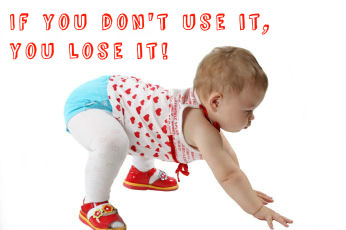I wanted to bring attention to the fact that there is a difference between causing a flexed position in the lumbar spine (lower back) and creating a neutral position at the pelvis. When your pelvis is in a neutral position, it doesn't necessarily mean that your lumbar spine is going to be in a flexed position.
I say this because I often find that people who have a history of lumbar disc bulges or herniations seem to perceive a neutral pelvic position as lumbar flexion. They also tend to be afraid of moving their pelvis out of an anterior tilt as they use it as a protective mechanism to avoid lumbar flexion.
The main issue I have with this is that although a flexed lumbar spine (particularly under load) causes disc compression, so does an excessive anterior pelvic tilt, not only does this alter the pressure at the discs but it also causes Sacroiliac Joint (SIJ) compression & encourages core instability. The majority of people who have excessive anterior pelvic tilts also have dysfunctional glutes (glute activation decompresses the SIJ). One of the roles of your glutes is to create a posterior tilt of the pelvis. If you never let your pelvis move out of anterior tilt then you are disabling your glutes (compare the above two pictures again and tell me which one can you see more glutes in) and you can probably add obliques; abdominals; TvA to that dysfunctional list too. You can tell by the creases of my top that in the first picture on the left my abs are stretched and elongated and in the picture on the right, they are contracted. Stretched abs = unprotected and compressed lower back!
Your body will find stability where it can if it is lacking and this can be in the form of SIJ compression due to dysfunction in your core musculature. Make sure you aren't forcing yourself into anterior tilt, whether under load (lifting or pushing weight) or not but working on pelvic stability instead so you know where neutral is.
Don't feed a habit...CHANGE a habit!






